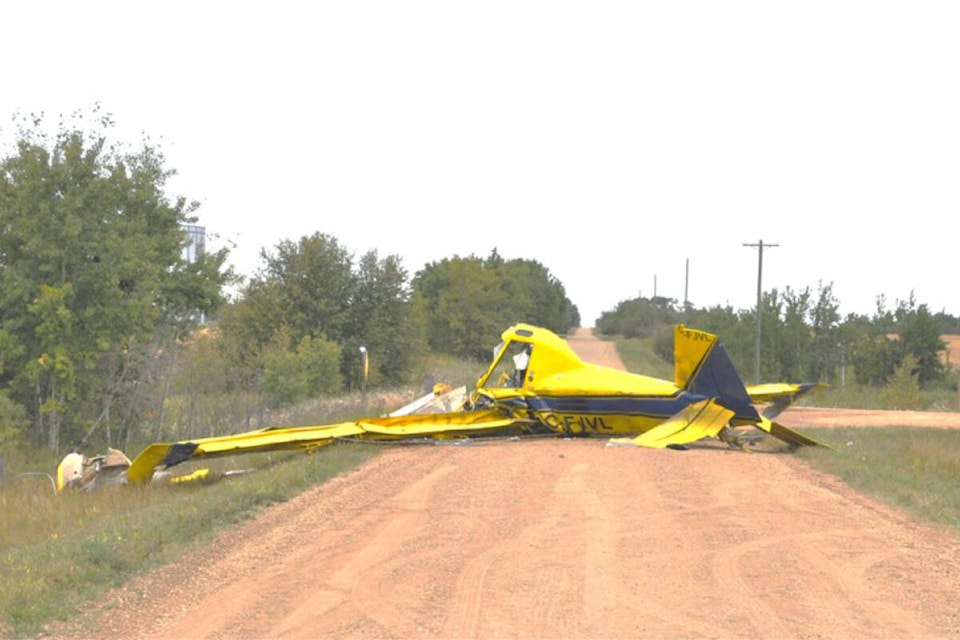The pilot of a crop spraying plane made numerous passes over a field near Donalda and was just finishing up the job last September when something went tragically wrong.
A Transportation Safety Board of Canada (TSB) report on the Sept. 12, 2022 fatal crash of the Arty’s Air Service Ltd. crop spraying plane released on Thursday concludes an aerodynamic stall caused the crash that killed the 39-year-old pilot from Bawlf.
The report says the experienced crop duster pilot had made numerous north-south runs over the field spraying herbicide and then did a couple of east-west passes to complete coverage of the field. On one of those runs, the plane climbed sharply to about 500 feet, stalled and nose-dived into the ground about 1.5 km west of Donalda, 110 km east of Red Deer.
An observer watching the spraying from a vehicle parked mid-field told investigators the plane started what appeared to be a normal climb.
“The climb was then observed getting steeper than the previous climbs until the aircraft appeared to stop, the nose dropped, and the aircraft began to roll to the right.”
The plane nose-dived into the middle of Range Road 190 and the pilot died on impact shortly before 10 a.m. The pilot was experienced with 6,190 hours of flying, including 2,800 hours of aerial spraying, more than 600 of which were in the Air Tractor AT-502B he was flying the day of the crash. He had completed his most recent pilot competency check three months earlier.
Investigators found no indications that the pilot lost control because of mechanical failure.
The cause of the crash was believed to be an aerodynamic stall which occurs “when the wing’s angle of attack exceeds the critical angle at which the smooth airflow begins to separate from the wing.
“When a wing stalls, the airflow breaks away from the upper surface, and the amount of lift generated is reduced to below that needed to support the aircraft.”
A stall can happen much quicker and unexpectedly when a plane is in a steep turn and more engine power is being applied, says the report.
In a safety message, the TSB reminds pilots that performing course reversals with steep climbs and bank angles greater than 45 degrees increases the likelihood of an aerodynamic stall that can lead to a spin.
“Encountering a stall or spin at low altitudes can result in a collision with terrain when there is insufficient altitude available to recover the aircraft.”
